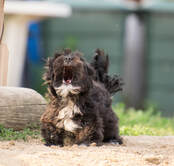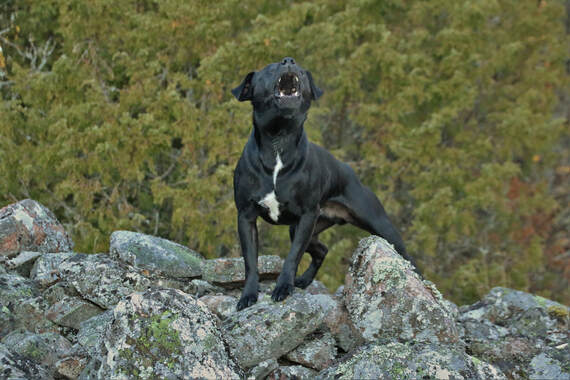|
Recently I posted on Facebook asking people what they would like to teach their dog, if they had a trick they wanted to try teaching their dog and I got several responses back saying "I want my dog to stop barking" so I thought I would look at that issue. The thing is, it's too big a topic for a short Facebook post. The first question I have when someone approaches me with a situation like this is "When does it happen?" Why? Because dogs will bark for a wide variety of reasons, and information about the situations in which the dog is barking helps determine a training plan. Situations in which dogs bark can include:
Next question: "What do you want your dog to do instead?" While this may seem like an obvious question, there are sometimes subtle differences - for example some people don't mind if their dog barks when someone comes to the door as long as the dog will stop when asked. But the main reason for this question is that it is challenging to train for a "don't". It is much easier to train for something. So what might that look like?
But we're not done yet. The next thing to consider is the underlying emotional state of the dog. Strong underlying emotions such as fear can impact the training plan. For example, a dog that barks at people that come to the door, then continues barking as the people enter the home while backing away and possibly trying to hide behind his owners is a different situation than a dog that barks at people that come to the door, then stops barking as soon as the people enter and approaches the people in a relaxed and friendly manner for attention. For the dog in the first scenario, barking at people at the door is just a symptom of the real issue, the dog is afraid of people entering the home. Teaching that dog to stop barking on cue won't address the underlying issue of being afraid of people, and therefore likely won't work and will be frustrating for the owners and the dog. Pursuing a behaviour modification program to address the fear would provide better results. On the other hand, the second dog is likely barking out of excitement or a desire to alert their owners to something that he feels they should be aware of. I've owned several dogs that fall into this category, including Destiny, a boxer who felt that it was her duty to alert us to any thing that changed in our environment. Given her breed heritage, that's not a surprising trait for her to have. In these situations, since the dog is happy to see the people once they enter the home, the issue is the arrival itself. So we can devise a training plan to teach the dog to stop barking on cue and it will likely be successful. What other emotional states may be involved with the different scenarios?
 Now you should be able to reflect on your own dog and answer the following questions:
Next time we'll look at putting together a training plan. Comments are closed.
|
Categories
All
Archives
May 2024
|
Online Learning Class Schedule Puppy Classes Manners Classes Sport Classes Scent Classes Agility Classes Private Lessons
Copyright 2020 Positively Obedient Canines


